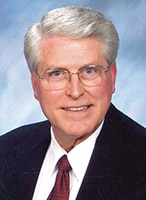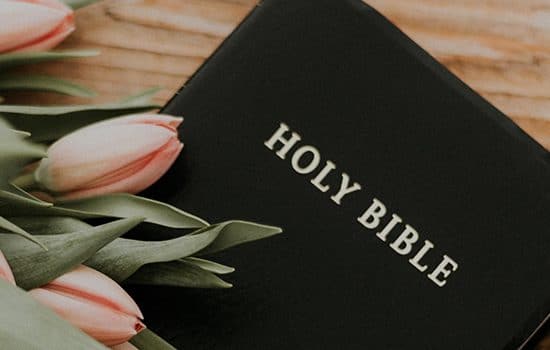 God’s Promise
God’s Promise
Formations: October 13, 2019
Scripture: 2 Chronicles 3:1-2; 6:12-17

Michael K Olmsted
This week’s text reminds me of the times I have visited great churches such as St. Paul’s in London and Notre Dame in Paris.
But every couple of years, I have also visited a small adobe church in the little Hispanic village of Chimayo, New Mexico. Built about 1815, that little church continues to serve a small farming community tucked away in the mountains north of Santa Fe; however, each Good Friday, thousands of pilgrims walk as much as 85 miles to worship there. What draws people to Chimayo is not spectacular architecture, but a quiet sense of God’s nearness.
It is human nature to want God in a tangible form, to mark a place where we can sense God is present – something that connects us to God’s promises. Consider that thinking as we regard King Solomon’s privilege of building a temple to God in Jerusalem, the tangible evidence of God’s promise that Israel would be God’s chosen people in the “promised land.”
The battles were significant. David had brought them through wars and the forming of an identity, and God’s miracles had marked every advancement. But David, whose hands were stained with blood, must step aside, and a new period of success and splendor would begin. No more desert tents for the “Ark of the Covenant,” but a temple that will outshine every pagan monument known in that day: built of the finest imported woods, lavishly trimmed with pure gold, fashioned of cut stone, ornamented with precious stones, requiring seven years to build!
But the question must be asked: Was the temple a dramatic emblem of God’s love and power or a monument to human effort and pride? Solomon declared: “The house that I am about to build will be great, for God is greater than other gods” (2 Chr.2:5).
Remember, Chronicles was compiled during Israel’s exile in a foreign land; Jerusalem and the temple were little more than ruins. The people longed to return home, rebuild, and find the promises of God again.
We are studying the point at which Israel first stood before the Jerusalem temple, as the young King Solomon both celebrated the building and all Israel understood Jehovah is the only true God. The dedication was carefully planned. Solomon stood on a raised bronze platform between the altar of the Lord and the “assembly of Israel.” Then he fell to his knees, spread his hands in supplication to heaven, and prayed, “O Lord, God of Israel, there is no God like you, in heaven or on earth, keeping covenant in steadfast love with your servants who walk before you with all their heart … you have kept your promise for your servant, my father David … therefore, O Lord, God of Israel … remember your promise that there shall never fail you a successor before me to sit on the throne of Israel” (6:14-16).
Do not miss the key to God answering Solomon’s prayer: “if only your children keep to their way, to walk in my law as you have walked before me” (6:16). God’s promises to Israel were first clearly stated at Mt. Sinai in the wilderness wandering. This scene reminds us of Joshua’s calling Israel to account at the end of his life, this same challenge to faithfulness (Joshua 24).
But this is not a religious formula for guaranteed success and prosperity. This covenant is all about relationship. We can never be perfect, never reach the status of God. This covenant is about grace, God’s love, forgiveness, and healing – the possibility of wholeness in mind and spirit. Everything about the physical arrangement of the temple, the laws of God, and the core of personal faith in God reminds us that only by his grace can we be God’s people.
Read all of chapter 6 to hear Solomon’s entire prayer. Remembering (not forgetting) what God has done for us is key to what we can become. If faith is reduced to rituals and recitations, nothing changes in your heart or your living.
Reflecting back on that quiet little church in Chimayo, New Mexico, I remember quietly sitting in the back of the sanctuary on a weekday morning when a handful of locals spent an hour simply praying. No priest. No ceremony. Only men and women on their knees seeking God. I remembering how God’s love in Christ opens the doorway of our present to God’s possibilities.
We always live in the present; we only live well when God is with us in that present. Israel had lived through great hardship, had failed numerous times, and had always found God waiting for them when all seemed lost. In the grace of God there is always a future, as Solomon says in his prayer: “I have built for you an exalted house, a place for you to reside forever” (6:2). The Jewish historian Josephus says the Babylonians destroyed Solomon’s temple almost five centuries after it was built. When the Jews were allowed to return home they could not begin to replicate Solomon’s magnificent shrine. In the time of Jesus, Herod the Great built an impressive new temple, but the religious life of the Jews at that time was dominated by rituals, legalism, and a difficult armistice between the Jerusalem authorities and their Roman oppressors.
Thoroughly structured religious authority, carefully delineated rules, authorized history cannot substitute for faith in God. A temple may be beautiful and a powerful emblem, but it can never substitute for faith within the human heart. God’s promise, from the beginning, has been to love us, and our response, if genuine, is to love God back. Loving God means to share his grace with others, to model a life of grace and compassion, to be a temple where the Holy Spirit of God is at work offering hope to this lost world.
We long for our Savior’s return as the Apostle John promises in Revelation. In the meantime, let us remember the promise of Jesus in Revelation 3:8 to the church in Philadelphia: “Look, I have set before you an open door, which no one is able to shut.” May our living prove that we believe God’s promise.
Formations is a curriculum series from Smyth & Helwys Publishing, Inc. through NextSunday Resources.
The PDF download requires the free Acrobat Reader program. It can be downloaded and installed at https://get.adobe.com/reader (uncheck optional offers first).


